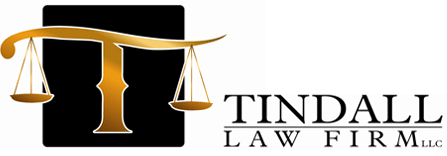Understanding Comparative Negligence in Connecticut
A Tradition of Excellence
 Sampling of Successful Case Resolutions
Sampling of Successful Case Resolutions
 Read our answers to some frequently asked questions.
Read our answers to some frequently asked questions.
Statement
 View Our Mission Statement
View Our Mission Statement

Premises Liability in Connecticut
July 10, 2025
Understanding Duty of Care in Connecticut
August 26, 2025Understanding Comparative Negligence in Connecticut: What You Need to Know
If you’ve been injured in an accident in Connecticut, you may be wondering how fault is determined and whether you’re still eligible to receive compensation—especially if you think you might have played a small role in the incident. This is where the legal concept of comparative negligence comes into play.
At Tindall Law Firm, LLC, we believe that educating our clients is just as important as representing them. Let’s break down what comparative negligence means, how it works in Connecticut, and how it may affect your injury claim.
What Is Comparative Negligence?
Comparative negligence is a legal principle used to determine how much fault each party bears in an accident. In many personal injury cases—like car accidents, slip and falls, or workplace injuries—more than one person or party may have contributed to what happened. Rather than denying compensation altogether if the injured person shares some blame, comparative negligence allows the court to assign a percentage of fault to each party.
For example, if you’re found to be 20% at fault for a car accident and the other driver is 80% at fault, you can still recover 80% of your total damages.
Connecticut’s Modified Comparative Negligence Rule
Connecticut follows a modified comparative negligence system under C.G.S. § 52-572h. This means that:
- You can still recover compensation as long as you are not more than 50% at fault for the accident.
- If you are 51% or more at fault – the so called “51% rule” — you cannot recover damages at all.
This is a critical threshold. Being just over half responsible can completely bar your ability to collect compensation, no matter how large your harms or damages may be. That’s why it’s important to have an experienced personal injury attorney who can investigate your case thoroughly and fight to reduce any fault unfairly assigned to you.
Real-World Example
Imagine you’re walking through a grocery store and slip on a spilled liquid that wasn’t cleaned up. However, you were looking at your phone and didn’t notice the hazard. The court may find you 30% responsible for not paying attention, and the store 70% responsible for failing to maintain a safe environment. If your total damages amount to $100,000, you’d still be eligible to receive $70,000.
Why Fault Percentages Matter
Fault percentages directly impact the amount of compensation you may receive. The higher your percentage of fault, the less you recover. Insurance companies know this—and they may try to shift more blame onto you to reduce their payout. That’s why having a skilled legal team on your side can make a significant difference.
At Tindall Law Firm, LLC we handle every case with care, working to prove negligence on the part of the other party while defending you against unfair blame.
How We Can Help
When you work with Tindall Law Firm, LLC we’ll help you understand every aspect of your case and how Connecticut’s comparative negligence laws apply to your situation. We’ll:
- Investigate the facts of your accident
- Collect evidence to establish liability
- Work with experts if necessary
- Negotiate with insurance companies
- Represent you in court if needed
Our goal is to maximize your compensation, while reducing any unwarranted blame placed on you.
Don’t Wait—There Are Time Limits
Connecticut has a statute of limitations for personal injury claims. In most cases, you must file within two years of the date of your injury. If you wait too long, you could lose your right to pursue compensation—even if you weren’t at fault.
Contact Tindall Law Firm, LLC Today
If you’ve been injured and think comparative negligence might affect your case, don’t guess—get clear, professional legal advice. At Tindall Law Firm, LLC we’ve helped countless clients throughout Connecticut navigate these complex laws and secure the compensation they deserve.
📞 Contact us today for a free consultation. Let’s talk about your case and how we can help.










